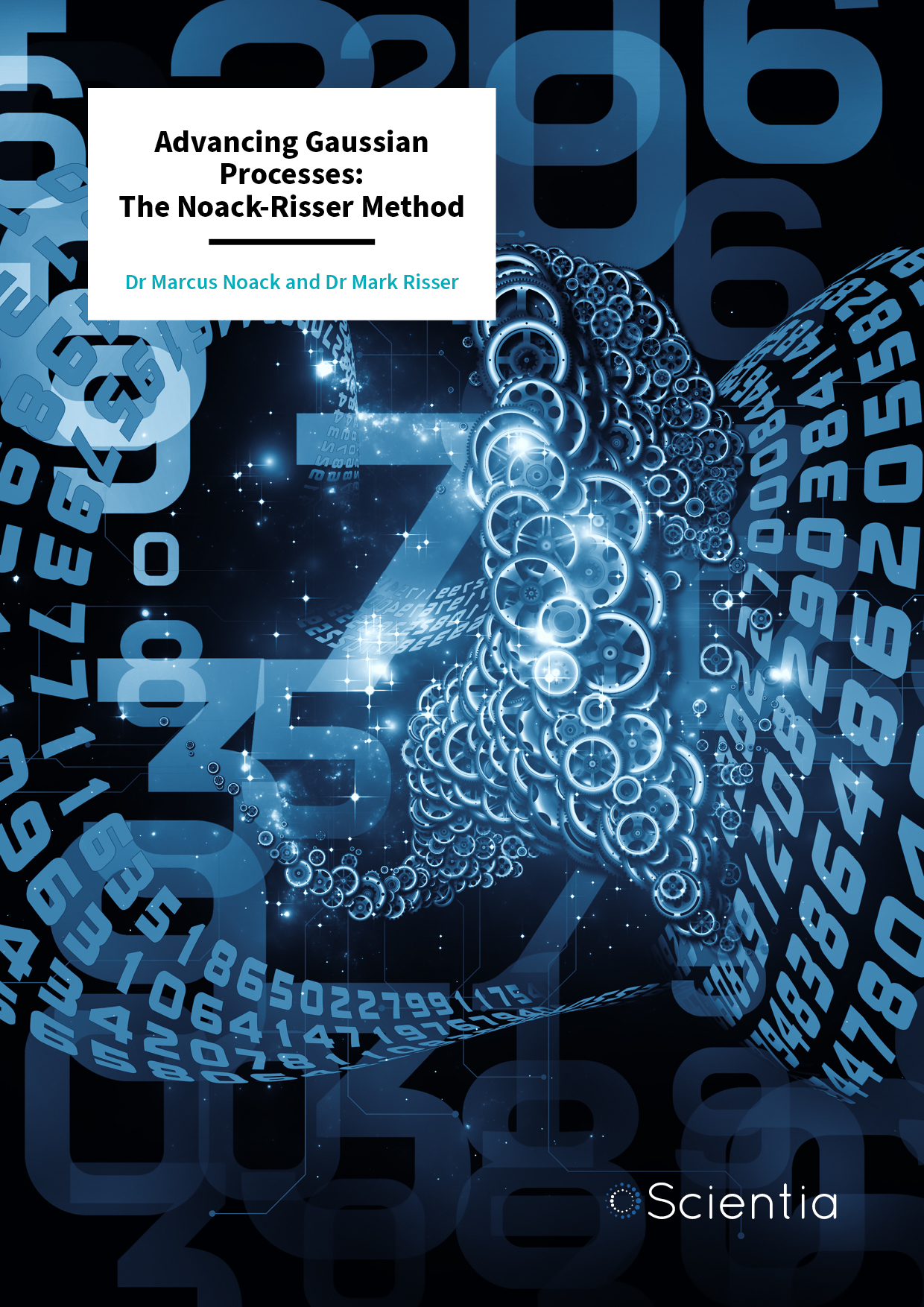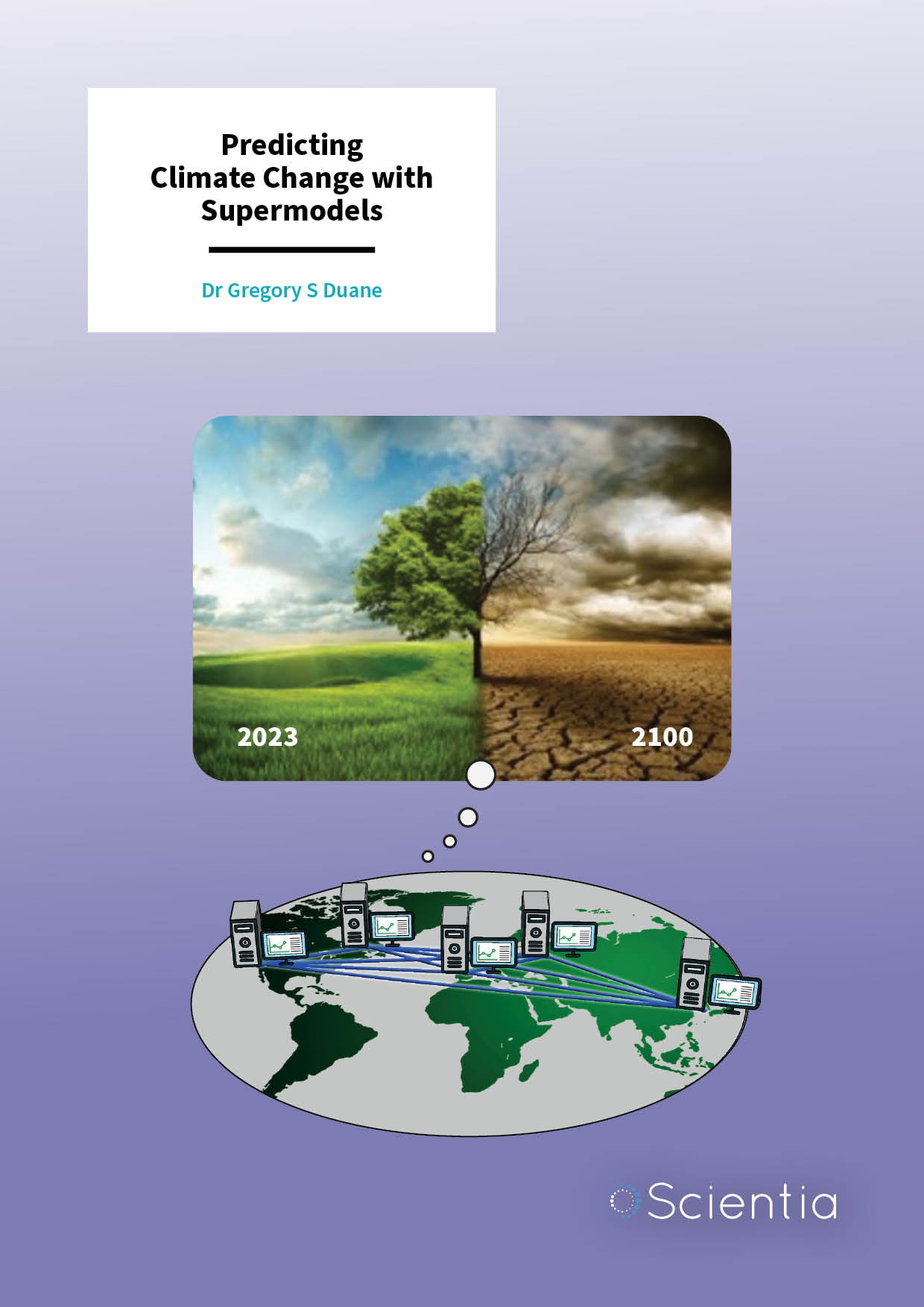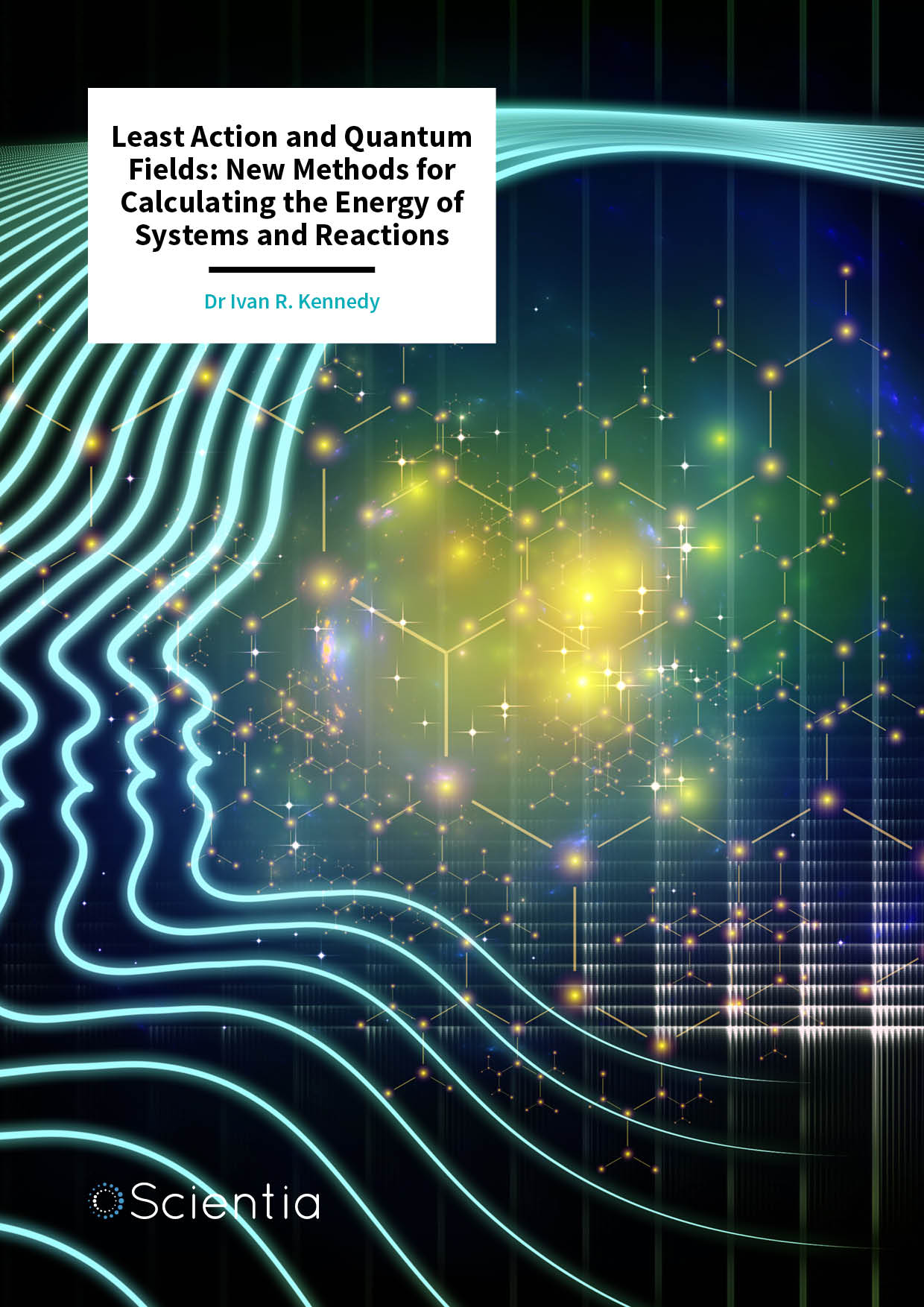Mitchell Schneider – Higher-quality Sources for Electron Accelerators
The ability to produce high-quality beams of fast-moving electrons is crucial, both to everyday technologies and scientific experiments. Today, there is a growing need for electron sources that can better meet the stringent demands of these applications. Michigan State University graduate student Mitchell Schneider, together with colleagues at Argonne National Laboratory and Los Alamos National Laboratory, has now made significant strides towards meeting these demands. Drawing from the latest advances in materials science, nanotechnology, and computational modelling, his team has now demonstrated some of the most advanced electron sources ever developed.
Electron Accelerators
Electron accelerators may sound like highly advanced devices, accessible only to the most cutting-edge physics experiments. Yet with applications ranging from smartphones to cancer treatments, many everyday technologies rely on the ability to routinely generate high-quality beams of electrons, and accelerate them to close to the speed of light. To do this, accelerators must first induce emissions from electron-rich surfaces. Afterwards, they expose these emitted electrons to electromagnetic fields, which oscillate in amplitude at either microwave or radio frequencies.
So far, this technique has largely involved an emission mechanism named ‘photoemission’ – where the surfaces of cathodes are illuminated with lasers, whose frequencies and phases precisely match up with these oscillations. Alternatively, using ‘thermionic’ sources, emissions can be induced by heating the cathode to just the right temperature. However, as technology continues to improve, the capabilities of the electron sources used by these existing techniques are not keeping pace with the required uses of next-generation accelerator machines.
As a result, demand has recently grown for new techniques, enabling the simple, yet scalable and efficient generation of electrons. According to Mitchell Schneider and his colleagues, this will require entirely new approaches to generating electrons – drawing from completely new areas of physics.

Increasing Operational Frequency
In order to achieve the highest possible performances in electron acceleration, cathode sources must fulfil several important criteria – including high charges, high current densities, and low amounts of spread between their highest-energy and lowest-energy electrons. In addition, the sources must be able to sustain highly stable beams over extensive operation times – displaying virtually no unwanted variations in brightness or energy.
Today, researchers are planning for a new generation of accelerators, which can operate at higher frequencies. This will make the devices compact and portable, while also allowing for increased strengths of the electric fields applied to the particles, enabling them to reach higher speeds over shorter distances. To satisfy these numerous stringent requirements, the electric fields applied to electron sources must oscillate extremely rapidly, and at extremely high magnitude – enabling the highest possible electron energies.
Unfortunately, this nearly eliminates the possibility of using photoemission and thermionic sources which researchers have relied on so far. As a result, Schneider’s team has developed a promising and highly advanced alternative technique, which could overcome existing challenges.
Turning to Field Emission
To achieve these criteria, Schneider and his colleagues look to an effect named ‘field emission’ – which is itself related to the mysterious phenomenon of quantum tunnelling. To understand this effect, we can think of electrons as being trapped within wells of potential energy – like a ball confined to a skateboard ramp. In order to overcome the gravitational potential energy of the ramp walls, this ball would need to be thrown or kicked with a sufficiently high amount of energy.
Due to quantum mechanics, the same rules don’t always apply to electrons: under the right conditions, they can spontaneously ‘tunnel’ through the energy barriers confining their positions, just as if a ball were to travel straight through the solid walls of the ramp. In the case of an accelerator’s electron source, electrons contained within the cathode material can be encouraged by an applied electric field to tunnel through the potential energy barriers confining them to the surface, allowing them to escape.
Crucially, this unusual effect is ideally compatible with accelerators operating at extremely high frequencies and electric field magnitudes – providing a promising route towards high-quality electron sources. However, this is challenging to achieve with conventional cathode materials. Instead, Schneider’s team proposes the use of advanced nanomaterials, which can closely govern effects that play out on molecular scales.

Nanostructured Diamond
In their research, Schneider and his colleagues have now made significant strides towards these capabilities, through close collaboration with other colleagues in the Department of Electrical and Computer Engineering at Michigan State University, as well as in the High Energy Physics Division at Argonne National Laboratory in Illinois, and in the Accelerator Operations and Technology Division at Los Alamos National Laboratory in New Mexico. Through their experiments, this extensive team discovered that field emission with enhanced efficiency and control can be induced through two different variations of the same material, called synthetic diamond.
To encourage high rates of quantum tunnelling, the researchers first experimented with ‘nanogranular’ materials. These structures feature nanoscopic grains of crystals, each measuring just a few nanometres across, and arranged in disorderly formations. In this case, Schneider’s team used nanocrystalline diamond, fabricated through a technique named ‘chemical vapour deposition’. Here, molecules within a carefully-mixed vapour react on top of a solid substrate, producing a thin, nanostructured film.
To produce more complex beams of electrons, featuring finely-tuned patterns in brightness, the team instead produced patterned arrays of diamond pyramids, with micrometre-scale bases and extremely sharp, nanometre-scale tips. Using standard silicon wafer processing and transfer techniques, Schneider and his colleagues could carefully tune the sizes, aspect ratios, and spacings between pyramids – allowing them to precisely shape the electron beams they produced. As the team hoped, when a strong electric field was applied across both types of cathodes, they emitted high-quality beams of electrons, and maintained them over extensive operation times.

An Analytical Toolkit
During these experiments, the team paid close attention to the processes taking place as electrons were emitted from their nanostructured cathodes. Through their analysis, they discovered that these materials play host to a deeply complex set of interactions. Since these processes are so deeply complex, it would require them to process vast amounts of raw experimental data in a compact, easy-to-use format. To do this, the researchers have now developed a robust computational toolkit called FEmaster, which allows them to realistically model these intricate dynamics for the first time.
FEmaster is all-in-one interface for processing field emission data, and can comprehensively analyse the performance of a field emission cathode during operation. It includes a set of image processing and conversion modules that take in raw hardware signals. From these inputs, the toolkit yields scientifically meaningful data that relate emitted charge with the voltage and electric field applied to the cathode. Therefore, it enabled the researchers to compare their experimental results with both well-established and novel theories of field emission.
To ensure the highest possible quality of electron beams, it would be important for Schneider’s team to fully understand the particle dynamics underlying the interactions between field emitted electrons, and external radio frequency or microwave electric fields – in a format where all relevant states of the system are represented. Therefore, the last set of modules of the FEmaster toolkit allowed them to pre-design emitted electrons both spatially and temporally on the cathode surface. In turn, they could further model and predict the behaviours of charges in external field environments as they travel through the accelerator.
Demonstrating Unique Advantages
With the help of this toolkit, Schneider and his colleagues are now able to analyse quantum tunnelling and field emission, in the extensive detail necessary to closely monitor the characteristics of electron source emissions. Through these capabilities, the researchers have now achieved several important milestones in their experiments. Firstly, they have successfully demonstrated field emission from nanostructured diamond cathodes, which can safely operate within electric fields as strong as 100 million Volts per metre.
Secondly, the team showed that their techniques can break world record in terms of how much charge can be generated – ensuring that the electron beams they produce are just as bright as those produced through laser-induced electron emissions. Finally, through the fabrication of specialised pyramid arrays, the team’s cathodes demonstrated an ability to produce precisely-shaped beams – allowing researchers to apply more sophisticated acceleration techniques, such as wakefield acceleration.

Applications in Industry and Research
The team’s electron source technology now promises to pave the way for a new generation of electron accelerators that are compact enough to fit on top of a lab table. This would allow the equipment to be easily transported on a vehicle platform, and even carried by hand, potentially making the technology far more affordable and accessible to a wider variety of groups.
If so, the new cathode nanomaterials could potentially be adopted on industrial scales – bringing exceptionally high-quality electron sources into commercial and medical use. A diverse range of applications could result from this rollout – including more advanced methods for fabricating the semiconductor materials used in smartphones; better ways to sterilise industrial equipment; and new targeted cancer treatments.
Elsewhere, the technology could bring about new opportunities for cutting-edge physics experiments at a wider variety of research institutions. This could lead to many exciting advancements, and new possibilities for breakthroughs in electron-positron linear colliders – such as the upcoming International Linear Collider (ILC).
SHARE
DOWNLOAD E-BOOK
REFERENCE
https://doi.org/10.33548/SCIENTIA755
MEET THE RESEARCHER

Mitchell Schneider
College of Engineering
Michigan State University
East Lansing
Michigan, USA
Mitchell Schneider is a PhD candidate at Michigan State University, and an Accelerator Science and Engineering Trainee under the ASET graduate certificate program. In his research, he collaborates with both Argonne National Laboratory – where he is part of the Argonne Wakefield Accelerator group; and Los Alamos National Laboratory – where he is part of the Accelerators and Electrodynamics group. Schneider’s research interests include electron guns and radio-frequency systems – which can be used as electron sources in high-power systems; and may also be exploited to produce isotopes, and powerful electromagnetic radiation for use in sensing.
CONTACT
E: schne525@msu.edu
W: https://www.egr.msu.edu/mam/profile/mitchell-schneider
KEY COLLABORATORS
Emily Jevarjian, Michigan State University
Tanvi Nikhar, Michigan State University
Benjamin Sims, Michigan State University
Taha Posos, Michigan State University
John Power, Argonne National Laboratory
Eric Wisniewski, Argonne National Laboratory
Manoel Conde, Argonne National Laboratory
Wangming Lui, Argonne National Laboratory
Kimberley Nichols, Los Alamos National Laboratory
Heather Andrews, Los Alamos National Laboratory
John W. Lewellen, Los Alamos National Laboratory
FUNDING
Los Alamos LDRD
Department of Energy, Office of High Energy Physics
Michigan State University, Global Impact Initiative
Department of Energy/Michigan State University, The Accelerator Science and Engineering Traineeship (ASET) Program
FURTHER READING
M Schneider, E Jevarjian, J Shao, SV Baryshev, FEbeam: Cavity and electron emission data conversion, processing, and analysis, A freeware toolkit for rf injectors, Review of Scientific Instruments, 2021, 92, 053305.
E Jevarjian, M Schneider, SV Baryshev, FEgen (v. 1): Field emission distribution generator freeware based on Fowler-Nordheim equation, 2020, arXiv preprint arXiv:2009.13046.
M Schneider, E Jevarjian, T Nikhar, TY Posos, W Liu, J Shao, SV Baryshev, Ampere-class Bright Field Emission Cathode Operated at 100 MV/m, 2021, arXiv preprint arXiv:2102.00071.
J Shao, M Schneider, G Chen, T Nikhar, KK Kovi, L Spentzouris, E Wisniewski, J Power, M Conde, W Liu, SV Baryshev, High power conditioning and benchmarking of planar nitrogen-incorporated ultrananocrystalline diamond field emission electron source, Physical Review Accelerators and Beams, 2019, 22, 123402.
KE Nichols, HL Andrews, D Kim, EI Simakov, M Conde, DS Doran, G Ha, W Liu, JF Power, J Shao, C Whiteford, Demonstration of transport of a patterned electron beam produced by diamond pyramid cathode in an rf gun, Applied Physics Letters, 2020, 116, 023502.
LA-UR-21-30750
REPUBLISH OUR ARTICLES
We encourage all formats of sharing and republishing of our articles. Whether you want to host on your website, publication or blog, we welcome this. Find out more
Creative Commons Licence (CC BY 4.0)
This work is licensed under a Creative Commons Attribution 4.0 International License. 
What does this mean?
Share: You can copy and redistribute the material in any medium or format
Adapt: You can change, and build upon the material for any purpose, even commercially.
Credit: You must give appropriate credit, provide a link to the license, and indicate if changes were made.
SUBSCRIBE NOW
Follow Us
MORE ARTICLES YOU MAY LIKE
Dr Tsun-Kong Sham – Dr Jiatang Chen – Dr Zou Finfrock – Dr Zhiqiang Wang | X-Rays Shine Light on Fuel Cell Catalysts
Understanding the electronic behaviour of fuel cell catalysts can be difficult using standard experimental techniques, although this knowledge is critical to their fine-tuning and optimisation. Dr Jiatang Chen at the University of Western Ontario works with colleagues to use the cutting-edge valence-to-core X-ray emission spectroscopy method to determine the precise electronic effects of altering the amounts of platinum and nickel in platinum-nickel catalysts used in fuel cells. Their research demonstrates the potential application of this technique to analysing battery materials, catalysts, and even cancer drug molecules.
Dr Marcus Noack and Dr Mark Risser | Advancing Gaussian Processes: The Noack-Risser Method
Dr Marcus Noack and Dr Mark Risser, researchers at Lawrence Berkeley National Laboratory, have recently proposed a significant advancement in the area of machine learning and data science that promises significant computational improvements: the enhancement of exact Gaussian Processes for large datasets, significantly improving data analysis capabilities for samples even beyond 5 million data points.
Dr Gregory Duane | Predicting Climate Change with Supermodels
Our universe is comprised of fascinatingly complex systems. Systems such as the Earth’s climate can, at first glance, seem far too complex and chaotic to predict accurately. Dr Gregory Duane and his team at the University of Colorado have been developing complex computational models that can learn from past data, providing us with intriguing insights and more accurate predictions about the future.
Dr Ivan Kennedy | Least Action and Quantum Fields: New Methods for Calculating the Energy of Systems and Reactions
The Principle of Least Action is a well-known tool for mathematicians and theoretical physicists. Simply put, the Principle of Least action states that, for a system to progress from one state to another, the variation in the average kinetic energy of the system minus the average potential energy of the system will be as little as possible. Dr Ivan Kennedy from the University of Sydney has found that the application of this important theorem, combined with the idea of a pervasive quantum field, to processes such as chemical reactions, atmospheric phenomena, and stellar structure, yields some unexpected but exciting results.





